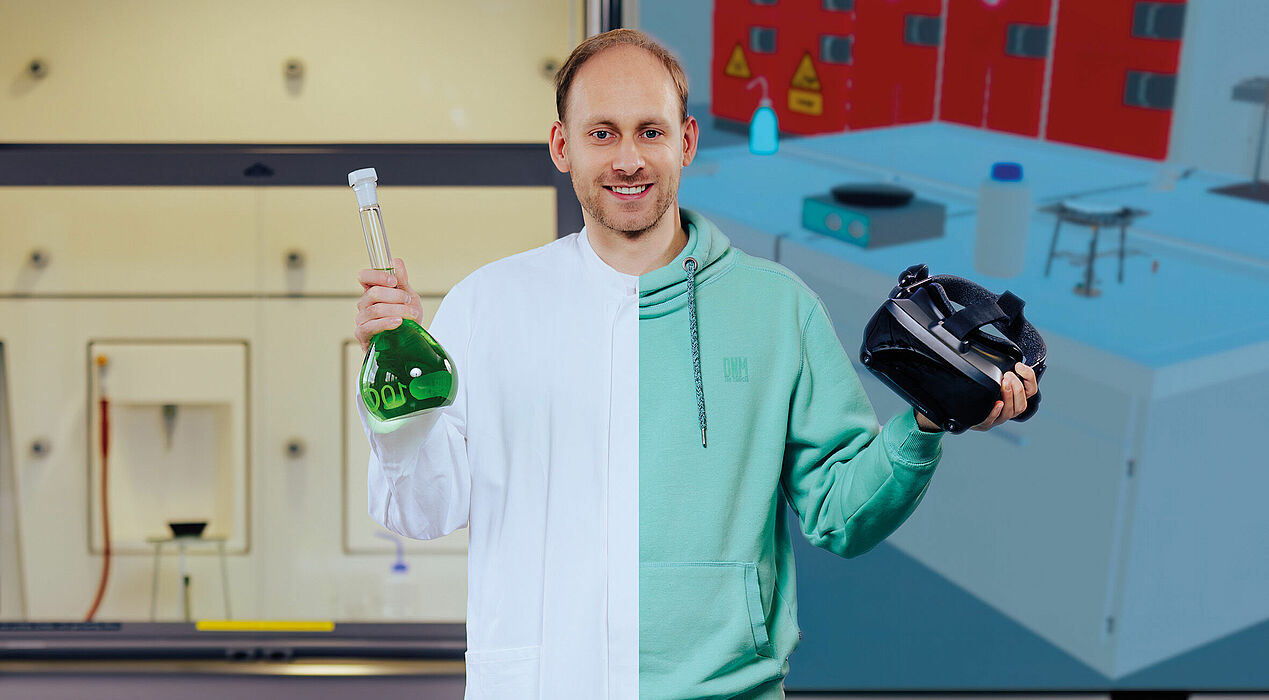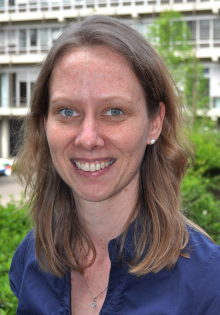Laboratory practicals are an essential part of natural science courses. Through various experiments, students learn how chemical processes take place and how substances react with each other. Especially at the beginning, however, it becomes apparent that first-year students come to university with different practical experiences from school. To take this discrepancy into account, a virtual chemistry laboratory was set up at Paderborn University with "VirtuChemLab". This not only makes it possible to learn the basic procedures of practical laboratory work, but also to conduct experiments independent of time and place. This is made possible by the use of virtual reality (VR).
Turning on the gas burner with VR goggles
"The virtual laboratory is entered by means of VR glasses. Controllers that recognise hand movements can be used to interact with the environment. The students can therefore operate all the objects in the lab with these special devices, which makes the virtual environment feel particularly real. For example, it is possible to weigh out portions of substances or switch on the gas burner," explains Jan-Luca Hansel, research associate in the "Theory of Distributed Systems" department, which is continuing the project after the end of the "Algorithms and Complexity" department at the Heinz Nixdorf Institute, which originally led the project.
The "VirtuChemLab" was set up by a team of 15 students under the supervision of the department. The project, which began last year, is funded by university grants of around 957,000 euros and was launched with the cooperation of the chemistry, chemistry didactics and computer science departments, the Centre for Information and Media Technologies, the Faculty of Cultural Studies and Media Studies at Paderborn University. The basic idea of "VR@UPB" is to create a virtual campus where teachers and students can get involved. The developed environments are scientifically evaluated by the didactics of chemistry and tested together with students of the Bachelor's and teacher training programmes.
See and measure chemical reactions
An exemplary use case for the virtual lab is measuring the temperature change when sodium hydroxide is dissolved in water. Hansel: "For this experiment, students take the necessary equipment and materials from the cabinets of the virtual lab, place them on the virtual lab row and prepare their use. The chemicals are then processed virtually in such a way that the incipient chemical reaction is visible and measurable for the students."
In multiplayer mode, several participants can work in the virtual lab at the same time and be supported by teachers. Communicative exchange between the participants is possible via the microphones and headphones built into the VR goggles. A virtual seminar room is also available for meetings, in which presentations or documents can be shared.
In the "VirtuChemLab", users can add new experimental set-ups even without prior programming or software knowledge. In future, there will also be a mechanism with which the VR system can interactively respond to the students' actions in the lab in the form of feedback or assistance.



